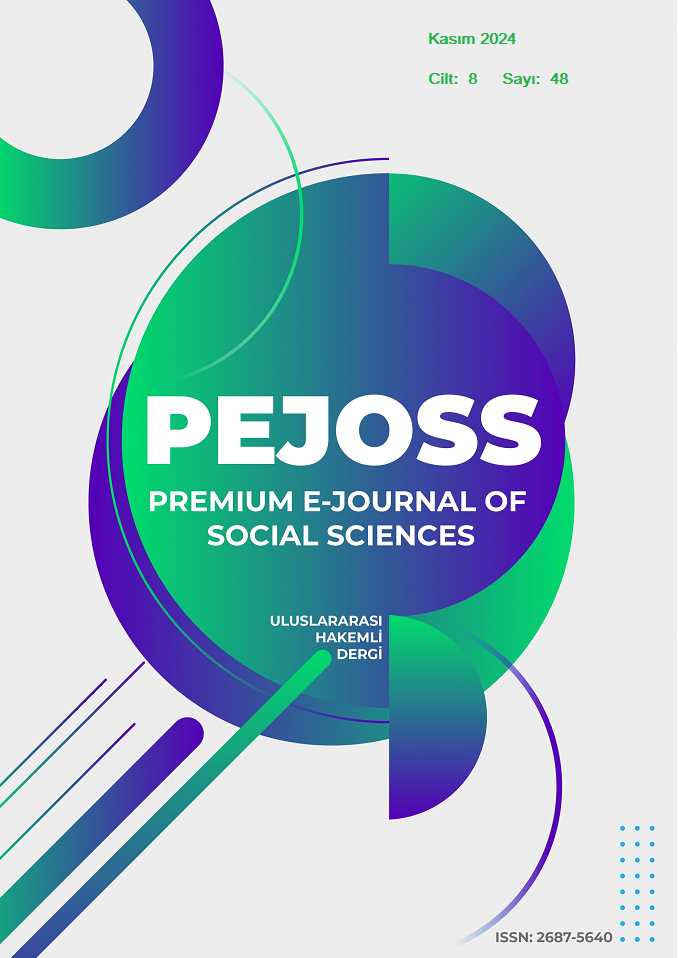The Effects of Information Technology Capabilities on Financial Performance: A Review on the Banking and Financial Sector
DOI:
https://doi.org/10.5281/zenodo.14311285Keywords:
Information Technology Capabilities, Financial Performance, Resource-Based ApproachAbstract
This study examines the effects of information technology (IT) capabilities on financial performance within the resource-based approach (RBV) framework. Specifically, the effects of technical infrastructure and human support dimensions of IT capabilities on capital adequacy ratio (CAR), return on assets (ROA), return on equity (ROE) and average return on assets (AROA) in the Turkish financial sector are analysed. Data obtained from 122 respondents working in the information technology departments of 11 banks and finance institutions were used in the study. The results reveal that technical IT capabilities have a positive and significant effect on CAR, but have a limited effect on other performance indicators. Human support, on the other hand, has no direct significant effect on financial indicators. However, a positive correlation was observed between technical IT capability and human support, suggesting that human support may have indirect effects. Furthermore, it is emphasised that IT makes significant contributions in areas such as customer satisfaction, operational efficiency and strategic flexibility. While the study emphasises the strategic importance of IT investments in the financial sector and the impact of technical infrastructure on performance, it draws attention to the need for more investment in human capital development. The findings of the study suggest that the effects on financial performance may vary depending on contextual factors and it would be useful to examine these relationships in detail with longer-term analyses. In conclusion, it is argued that IT capabilities should be considered not only as technological infrastructure but also as a strategic tool for organisational transformation.
Downloads
References
Aktan, Ç. A., & Vural, İ. (2016). Bilgi çağında bilginin yönetimi. Yeni Türkiye Bilim ve Teknoloji Özel Sayısı, 1(88), 1-15.
Barney, J. (1991). Firm resources and sustained competitive advantage. Journal of Management, 17(1), 99–120.
Banker, R. D., Kalvenes, J., & Patterson, R. A. (2006). Research note—information technology, contract completeness, and buyer-supplier relationships. Information Systems Research, 17(2), 180-193.
Beccalli, E. (2007). IT and European bank performance. In E. Beccalli (Ed.), IT and European Bank Performance (pp. 16-41). Basingstoke: Palgrave Macmillan.
Bharadwaj, A. S. (2000). A resource-based perspective on information technology capability and firm performance: An empirical investigation. MIS Quarterly, 24(1), 169-196.
Benito, J. G (2007). Information technology ınvestment and operational performance in purchasing. Industrial Management & Data Systems, 107 (2), 201-28.
Brynjolfsson, E., & Hitt, L. M. (2000). Beyond computation: Information technology, organizational transformation and business performance. Journal of Economic Perspectives, 14(4), 23-48.
Chen, Y., Liang, L., Yang, F., & Zhu, J. (2006). Evaluation of information technology investment: A data envelopment analysis approach. Computers & Operations Research, 33(5), 1368-1379.
Chen, Y., Wang, Y., Nevo, S., Jin, J., Wang, L., & Chow, W. S. (2014). IT capability and organizational performance: The roles of business process agility and environmental factors. European Journal of Information Systems, 23(3), 326-342.
Dehning, B., & Stratopoulos, T. (2003). Determinants of a sustainable competitive advantage due to an IT-enabled strategy. Journal of Strategic Information Systems, 12(1), 7-28.
Gold, A. H., Malhotra, A., & Segars, A. H. (2001). Knowledge management: An organizational capabilities perspective. Journal of Management Information Systems, 18(1), 185-214.
Grant, R. M. (1991). The resource-based theory of competitive advantage: Implications for strategy formulation. California Management Review, 33(3), 114-135.
Günsel, A., & Tukel, A. (2011). Does information technology capability improve bank performance? Evidence from Turkey. International Journal of eBusiness and eGovernment Studies, 3(1), 41-49.
Hair, J. F., Black, W. C., Babin, B. J., & Anderson, R. E. (2006). Multivariate data analysis (6th ed.). Upper Saddle River, NJ: Pearson Prentice Hall.
Han, H. S., Lee, J. N., & Seo, Y. W. (2008). Analyzing the impact of a firm’s capability on outsourcing success: A process perspective. Information & Management, 45(1), 31-42.
Harris, D. H. (Ed.). (1994). Organizational linkages: Understanding the productivity paradox. Washington, DC: National Academies Press.
King, W. R., Grover, V., & Hufnagel, E. H. (1989). Using information and information technology for sustainable competitive advantage: Some empirical evidence. Information & Management, 17(2), 87-93.
Mata, F. J., Fuerst, W. L., & Barney, J. B. (1995). Information technology and sustained competitive advantage: A resource-based analysis. MIS Quarterly, 19(4), 487-505.
Melville, N., Kraemer, K., & Gurbaxani, V. (2004). Review: Information technology and organizational performance: An integrative model of IT business value. MIS Quarterly, 28(2), 283-322.
Mithas, S., Ramasubbu, N., & Sambamurthy, V. (2011). How information management capability influences firm performance. MIS Quarterly, 35(1), 237-256.
Ravichandran, T., & Lertwongsatien, C. (2005). Effect of information systems resources and capabilities on firm performance: A resource-based perspective. Journal of Management Information Systems, 21(4), 237-276.
Downloads
Published
How to Cite
Issue
Section
License
Copyright (c) 2024 Premium e-Journal of Social Science (PEJOSS)

This work is licensed under a Creative Commons Attribution 4.0 International License.


